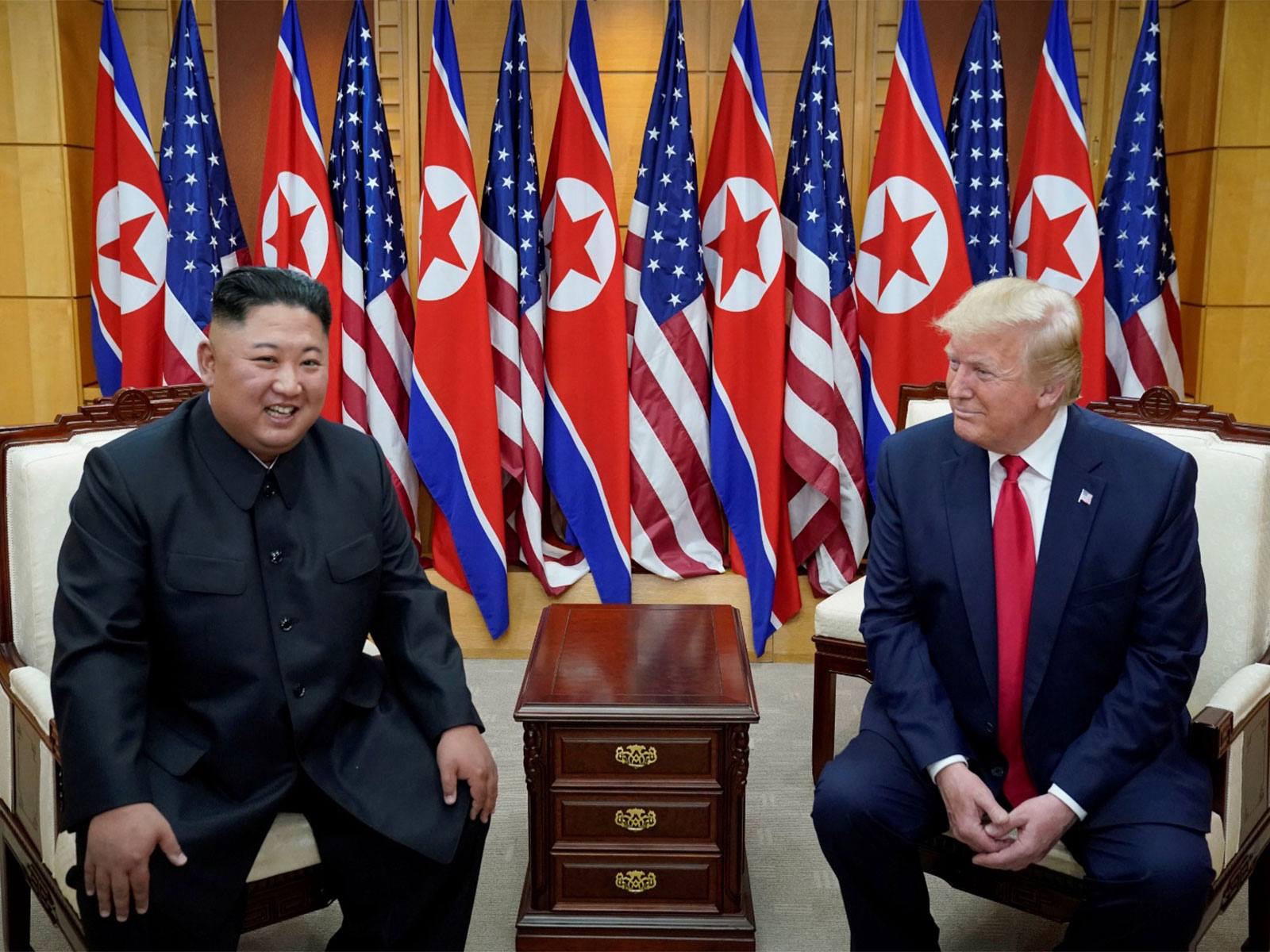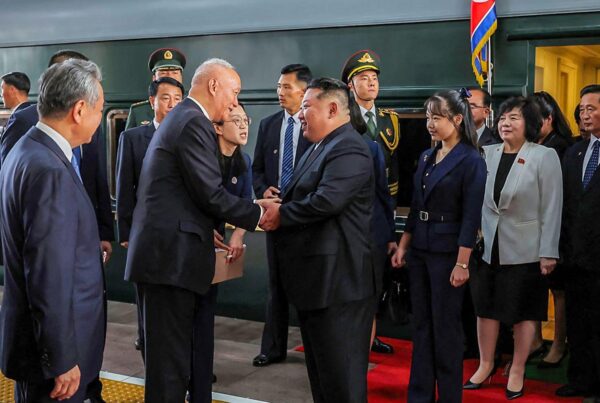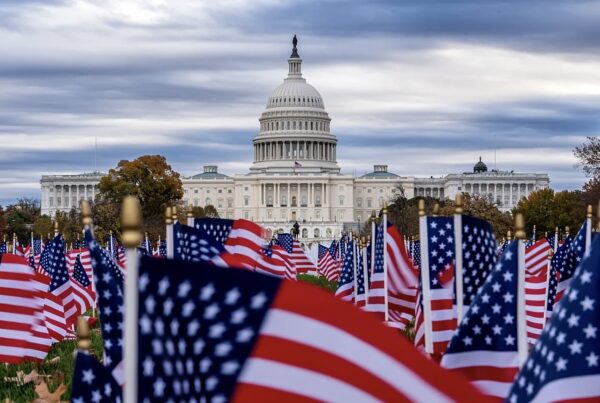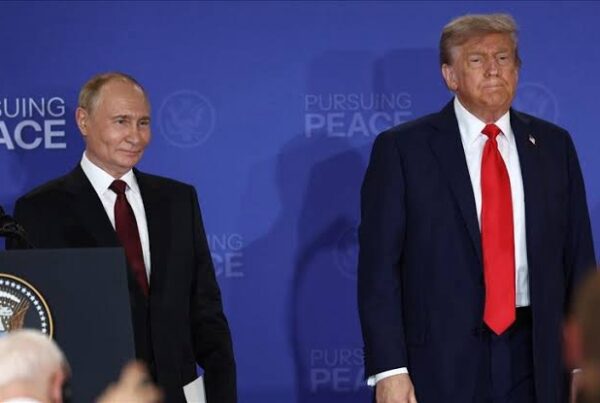Donald Trump has opened the possibility of meeting North Korean leader Kim Jong-un during his upcoming Asia-Pacific tour. The potential encounter comes as the former US president intensifies preparations for high-level trade negotiations with Chinese President Xi Jinping.
According to reports from The Guardian, Trump expressed his willingness to engage Kim if conditions align during his visit. Simultaneously, Reuters reported that Washington and Beijing are nearing a new trade agreement framework, expected to be reviewed by Trump and Xi in the coming weeks.
This dual-track diplomacy highlights a broader strategy: combining regional security discussions with renewed economic engagement in Asia.
Diplomatic Signals in the Asia-Pacific
As the geopolitical landscape in Asia shifts, Trump’s comments suggest an attempt to reassert Washington’s influence in a region increasingly shaped by China’s economic and security ambitions.
During his upcoming tour, Trump is expected to visit several key allies, including Japan and South Korea. The inclusion of a possible meeting with Kim Jong-un could mark the first direct engagement between the two leaders since their historic summits in Singapore (2018) and Hanoi (2019).
Renewed Approach to North Korea
The potential meeting signals Trump’s continued interest in shaping the narrative around North Korea’s denuclearization, an issue that defined much of his earlier foreign policy. While previous efforts stalled over disagreements on sanctions relief and verification measures, Trump has hinted that “personal diplomacy” remains the most effective path forward.
Experts note that Kim Jong-un, facing economic constraints and limited international engagement, may also welcome renewed dialogue to seek concessions or stability assurances. This could set the stage for a symbolic yet strategically significant encounter.
Regional Reactions and Strategic Implications
Analysts across Seoul, Tokyo, and Beijing are watching closely. South Korea, in particular, has called for any future talks to focus on sustainable peace mechanisms rather than short-term optics. Meanwhile, Japan remains cautious, emphasizing the need for tangible progress on security and missile threats.
The timing also coincides with growing US-China rivalry, making any interaction between Trump and Kim a potential signal of Washington’s flexibility in regional diplomacy.
US-China Trade Negotiations Enter a Crucial Phase
While the diplomatic focus may rest on the Korean Peninsula, the economic agenda remains equally critical.
Reports indicate that US and Chinese negotiators have been finalizing a series of trade understandings covering tariffs, technology transfers, and market access. The upcoming Trump-Xi meeting is expected to formalize these agreements, marking a potential thaw in economic relations after years of friction.
Tariff Policies Under Review
One major point under consideration is the rollback of certain tariffs imposed during the previous trade war. Sources familiar with the talks suggest that both sides are exploring gradual adjustments tied to measurable progress in technology and agricultural trade.
For American exporters, particularly in the manufacturing and agriculture sectors, these changes could restore competitiveness in Asian markets. On the Chinese side, renewed access to US technologies could help stabilize supply chains disrupted by export controls and sanctions.
Business Implications for Asia-Pacific Trade
For business operators across Asia-Pacific, especially those in logistics and export-import industries, these developments carry tangible implications. A shift in US-China trade dynamics could directly affect shipping costs, customs policies, and cross-border payment structures.
Analysts recommend that companies closely monitor policy announcements, as any change in tariff frameworks could alter procurement strategies and regional distribution models.
The Intersection of Diplomacy and Economics
The convergence of potential Trump-Kim dialogue and US-China trade negotiations underscores a central theme of Trump’s geopolitical playbook: linking diplomacy with economic leverage.
In his previous tenure, Trump frequently used trade policy as both a negotiating tool and a measure of strategic influence. Revisiting that approach in 2025 could reshape the balance of power across the Indo-Pacific, particularly if Washington reengages in multilateral trade frameworks previously abandoned.
Prospects for Regional Stability
The revival of diplomatic outreach toward both Pyongyang and Beijing could signal a pragmatic shift from confrontation to calibrated engagement. While critics remain skeptical of long-term outcomes, such gestures may reduce immediate tensions and open new channels for negotiation.
Additionally, regional partners such as ASEAN members are expected to welcome any de-escalation that promotes economic predictability and peace across critical shipping routes in the South China Sea.
Business Outlook: Navigating Policy Uncertainty
For businesses operating within the Asia-Pacific corridor, uncertainty remains a defining factor. Policy shifts between Washington, Beijing, and Pyongyang can influence tariffs, currency fluctuations, and investor sentiment.
Global logistics networks, in particular, may experience transitional adjustments as trade flows respond to evolving regulatory environments. Firms engaged in import-export should prepare contingency plans, diversify supplier bases, and enhance compliance readiness to mitigate risks.
Industry observers also emphasize the value of political risk assessment, noting that seemingly symbolic summits can have real economic consequences, especially if tied to broader trade or sanction frameworks.
Strategic Calculations Ahead
The weeks ahead could mark a turning point in the recalibration of US engagement in Asia. Whether Trump’s outreach to Kim Jong-un materializes or not, the symbolism of open diplomacy coupled with pragmatic trade negotiation may redefine Washington’s posture in the region.
For now, investors and policymakers alike are watching for official announcements that could confirm meeting dates, trade frameworks, and the direction of US foreign policy under Trump’s renewed global presence.
As the Asia-Pacific becomes the stage for both diplomatic theater and economic recalibration, the stakes for businesses and governments continue to rise. Staying informed, adaptable, and strategically positioned will be key to navigating this evolving landscape.
In conclusion, Donald Trump’s openness to meet Kim Jong-un, alongside his planned talks with Xi Jinping, reflects a deliberate convergence of diplomacy and trade. For regional stakeholders and global markets, the coming months may reveal whether this dual engagement delivers lasting stability or simply another chapter in the complex US-Asia narrative.
For deeper insights on global diplomacy and economic trends, continue reading Olam News’ coverage on international affairs and business strategies.




